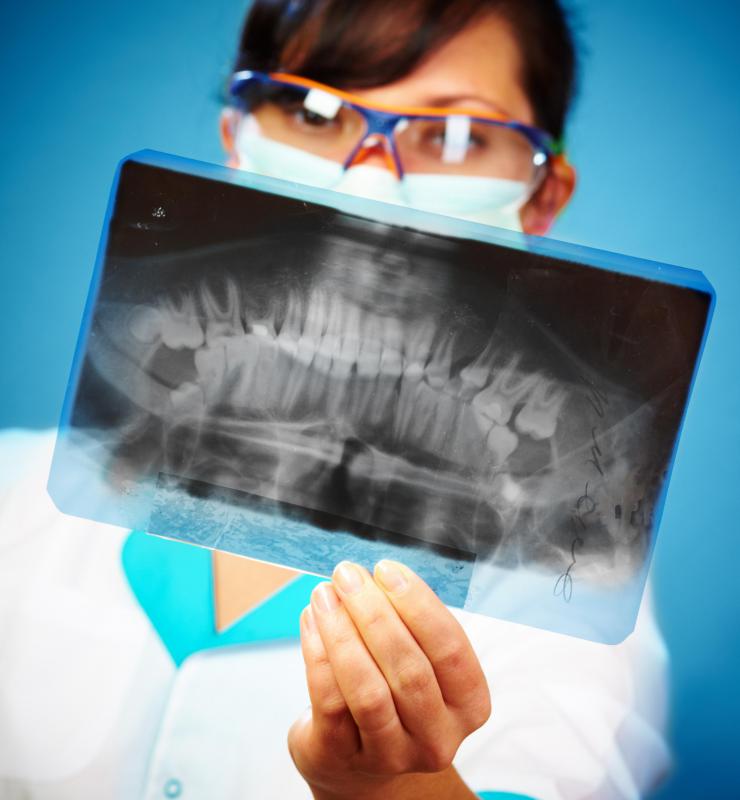At WiseGEEK, we're committed to delivering accurate, trustworthy information. Our expert-authored content is rigorously fact-checked and sourced from credible authorities. Discover how we uphold the highest standards in providing you with reliable knowledge.
What Is a Low Intensity Pulsed Ultrasound?
Low Intensity Pulsed Ultrasound (LIPUS) is the use of equipment that emits sound waves to help heal injuries. It is often performed to heal damage to connective tissue such as ligaments, as well as to help the body repair broken bones. Also used in dentistry, this type of ultrasound is generally different from that which is used to image parts of the body. Ultrasound used for imaging typically has a higher intensity over a certain volume of space. Sound waves, which cannot be heard by the human ear, are directed into the body and are typically absorbed by different types of tissue, such as bone.
Some scientific studies have shown that Low Intensity Pulsed Ultrasound increases the speed of bone fracture healing. Other research has not been as conclusive, yet the procedure is used often to treat various kinds of fractures. With broken bones, the sound waves can help stimulate responses from cells and molecules. Low Intensity Pulsed Ultrasound can also stimulate proteins that help bones heal; the vibration as well as pressure changes caused by the sound waves normally signal enzymes that help harden substances in bone tissue.

Blood pressure and fluid flow at an injured site are often stimulated by Low Intensity Pulsed Ultrasound. Cells are then usually brought from the interior bone marrow to the break, so that remodeling of the bone can take place. Some studies have shown that LIPUS can help heal bone fractures that the body would not repair without treatment.
In addition to Low Intensity Pulsed Ultrasound for fracture healing, dentists sometimes use it for treating tooth problems. Damaged or diseased teeth can be stimulated to grow; however, the ultrasound source is typically used more than once a day over a period of time. Developing teeth have been implanted into mice, and exposed to LIPUS. The enamel, or outer tooth coating, and an inner structure of tissue and blood vessels, then formed after the tooth was implanted into the jawbone.

Machinery used for LIPUS is often small and portable. It often consists of a main control unit and a probe-like component attached to a wire. Such devices can be used on complete breaks of bone as well as on less severe stress fractures. Sporting clubs sometimes use Low Intensity Pulsed Ultrasound to treat injured athletes; while some have reported that bone fractures can heal up to two weeks sooner than with other treatments. This type of ultrasound continues to gain popularity around the world as many people seek more affordable and less invasive therapeutic alternatives.
AS FEATURED ON:
AS FEATURED ON:














Discuss this Article
Post your comments